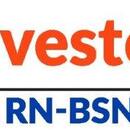
Unscramble Letters
Week 5 Health Assessment UnscrambleOnline version
Test your knowledge of depression and substance abuse nursing assessment in this challenging unscramble letters game!
1
A mental health disorder characterized by persistent feelings of sadness, hopelessness, and a lack of interest or pleasure in activities.
2
A drug or chemical that alters the function of the body or mind when consumed or introduced into the body.
3
The process of gathering information about a person's physical, mental, and emotional health to make a diagnosis or treatment plan.
4
Relating to the mind or mental health.
5
The process of evaluating a patient's mental health condition and needs.
6
The identification of a mental illness based on symptoms and assessment.
7
The interventions and therapies used to address mental health conditions.
8
The medical specialty focused on the diagnosis and treatment of mental disorders.
9
The use of various techniques to help individuals with mental health issues.
10
The process of regaining mental health and well-being after a mental illness.
11
Negative attitudes and beliefs surrounding mental health conditions.
12
The process of evaluating a patient's neurological condition and determining a course of treatment.
13
A sudden, uncontrolled electrical disturbance in the brain that can cause changes in behavior, movements, and consciousness.
14
A language disorder that affects a person's ability to communicate, understand, and express themselves through speech or writing.
15
Involuntary, rhythmic shaking or trembling of a body part, often the hands, that can be a symptom of various neurological conditions.
16
A lack of muscle coordination or control that can affect movements, balance, and speech, often caused by damage to the cerebellum.
17
A motor speech disorder characterized by difficulty in articulating words due to weak, imprecise, or uncoordinated muscles used for speech.
18
Weakness or partial paralysis affecting one side of the body, typically caused by damage to the brain or spinal cord.
19
Double vision, a condition in which a person sees two images of a single object, often caused by problems with eye muscles or nerves.
20
Involuntary, rapid eye movements that can occur horizontally, vertically, or in a rotary pattern, often indicating a neurological problem.
21
The inability to raise the front part of the foot due to weakness or paralysis of the muscles that lift the foot.
22
The development of inelastic, fiber-like tissue in place of normally elastic tissues.
23
A surgical procedure that uses an arthroscope to visualize, diagnose, and treat problems inside a joint.
24
A tough band of tissue that connects bones at a joint and provides stability.
25
A fibrous tissue that connects muscle to bone and allows movement.
26
A congenital condition where the foot and lower leg turn inward and downward.
27
An injury that forces the ends of bones out of position, often caused by a fall or a blow to the joint.
28
The inward curve of the lumbar spine just above the buttocks, also known as swayback.
29
A temporary eruption or discoloration of the skin.
30
An abnormal change in the structure of an organ or tissue.
31
An open sore or wound on the skin.
32
A small pocket of fluid within the upper layers of the skin.
33
A condition where patches of skin become inflamed, itchy, and red.
34
A chronic autoimmune condition that causes rapid buildup of skin cells.
35
A type of skin cancer that develops from the pigment-producing cells of the skin.
36
The partial or complete absence of hair from areas of the body where it normally grows.
37
The misuse of a substance, often resulting in negative consequences for the individual's health and well-being.
38
The process of evaluating an individual's condition or situation to determine the presence or severity of substance abuse.
39
The results or observations obtained from an assessment or examination of an individual suspected of substance abuse.
40
Any chemical or drug that has the potential to be abused or cause addiction, including alcohol, illicit drugs, and prescription medications.
41
Deviating from what is considered normal or typical, often indicating the presence of a substance abuse disorder.
42
A single person who is being assessed or evaluated for substance abuse, often in the context of their unique circumstances and experiences.
43
The process of evaluating a person's mental health status through various methods and tools.
44
The results or conclusions obtained from a mental health assessment.
|








